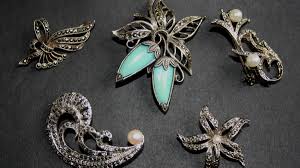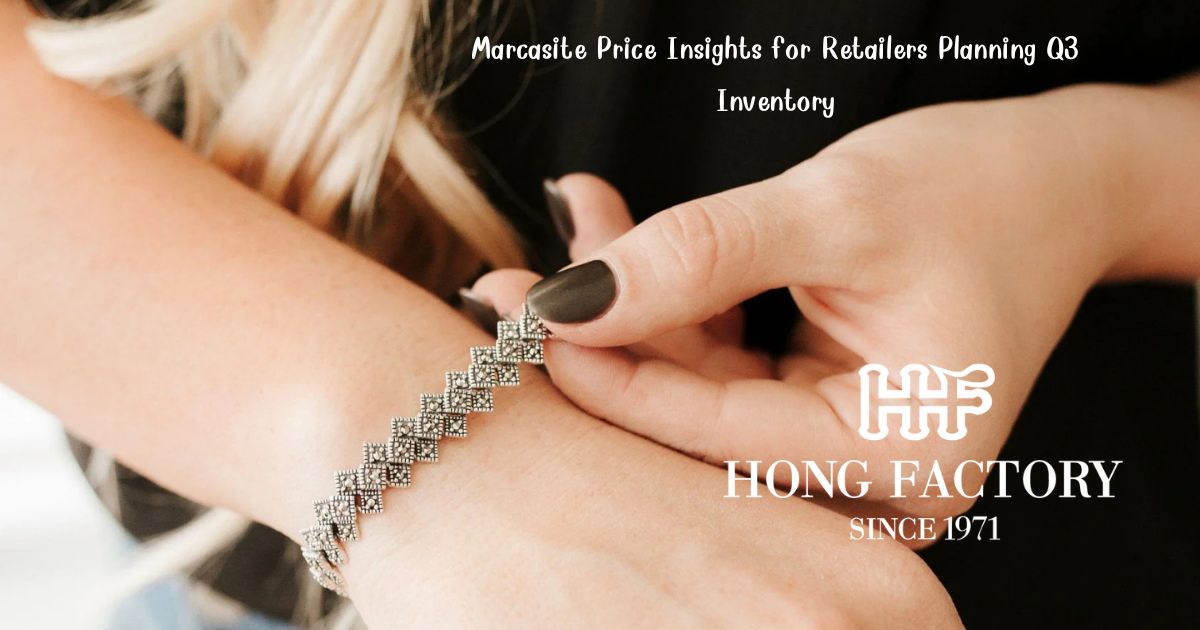As retailers prepare their inventory for Q3, understanding the pricing trends of key materials like marcasite becomes essential. Whether you’re managing a boutique jewelry store or sourcing for a large-scale wholesale operation, having the right pricing knowledge can directly impact your profit margins, competitiveness, and customer satisfaction.
In this article, we explore the latest insights into marcasite price trends, the factors influencing costs, and how retailers can make informed decisions when planning their third-quarter inventory.
Marcasite Price Insights for Retailers Planning Q3 Inventory

-
Understanding Marcasite: A Quick Overview
Marcasite, often mistaken for pyrite, is a semi-precious stone admired for its vintage aesthetic and affordability. It is widely used in silver jewelry, especially in vintage-style earrings, pendants, and brooches. Its price has remained relatively stable over the years, but several factors now influence its cost in global markets.
Unlike high-end gemstones like diamonds or sapphires, marcasite appeals to cost-conscious customers looking for elegance without excess. That affordability paired with the craftsmanship needed for marcasite settings has carved out a unique niche in the jewelry industry.
-
Global Demand Fluctuations and Regional Differences
One of the primary drivers of marcasite pricing is demand. In Q2, rising interest in vintage jewelry especially among Gen Z consumers led to a slight uptick in wholesale prices, particularly in Europe and Southeast Asia.
- In the UK and Germany, demand for marcasite brooches and rings grew by over 8%.
- Thailand, a major source of marcasite-set jewelry, saw increased export volume.
- North American retailers have begun diversifying their vintage-inspired lines to include marcasite alongside pearls and crystals.
Retailers should factor in regional popularity and adjust inventory levels accordingly. Conducting customer surveys or analyzing previous sales trends can provide helpful data for regional decision-making.

-
Raw Material and Production Cost Trends
While marcasite itself is inexpensive, the production process especially hand-setting techniques affects final costs. Labor shortages, increased silver prices, and fuel costs for mining operations all add pressure to pricing.
- Silver prices have increased 5–7% since the start of the year.
- Skilled labor for marcasite setting remains limited, especially for complex designs.
- Increased utility costs in manufacturing countries such as Thailand and India can raise operational expenses.
Retailers must account for these indirect costs when negotiating with suppliers. It is recommended to work closely with manufacturers who maintain transparent pricing models and clear breakdowns of cost components.
-
Exchange Rates and Import Tariffs
Currency fluctuations play a critical role in the final landed price of marcasite jewelry. A stronger US dollar may benefit American retailers sourcing from Asia, but Brexit-related tariffs still impact UK importers.
- Watch for changes in trade agreements between ASEAN and major markets.
- Budget buffer amounts to hedge against future exchange volatility.
- Collaborate with logistics partners to understand landed costs including VAT, duties, and surcharges.
These financial variables should be reviewed monthly, especially in volatile economic climates. Many retailers now use hedging tools or forward contracts to lock in currency rates.

-
Seasonality and Style Trends for Q3
Marcasite’s appeal grows during autumn collections, where darker tones and vintage accents dominate. For Q3 planning:
- Focus on items like marcasite leaf brooches, garnet-marcasite rings, and silver marcasite lockets.
- Prepare limited-edition sets that reflect heritage styles or Art Deco designs.
- Pair marcasite with birthstones or zodiac elements for themed releases.
By understanding seasonal buying behaviors, retailers can stock strategically. Collaborations with stylists and influencers can also increase visibility for niche products.
-
Supplier Insights: Ready Stock vs. Made-to-Order
Retailers planning inventory must balance availability and customization. Ready stock options tend to lock in pricing, offering predictability, while made-to-order designs may be more exposed to shifting costs.
- Prioritize ready stock for bestsellers.
- Use made-to-order for boutique or personalized collections.
- Inquire about semi-custom programs (e.g., gemstone swaps, setting adjustments) that combine speed with flexibility.
Suppliers offering mixed models (both stock and custom) are often ideal partners, as they support responsive inventory strategies.

-
Inventory Strategy: How Much is Too Much?
Overstocking ties up capital, but understocking risks missed sales. Consider:
- Using sales data from Q3 of the previous year.
- Adjusting for marketing campaigns or new product launches.
- Planning for restock cycles every 30–45 days for agility.
- Monitoring competitor activity and pricing shifts on marketplaces like Etsy and Amazon.
Some advanced retailers use AI inventory tools to forecast demand using real-time data. These tools can reduce waste and maximize revenue.
-
Forecasting Marcasite Prices into Q4
Early indicators suggest continued stable pricing for marcasite, with slight increases expected if silver continues to rise. Holiday collection planning should begin by late Q3, and retailers would benefit from locking in bulk orders sooner rather than later.
- Expect increased demand around gifting seasons, such as Black Friday and Christmas.
- Secure production slots early to avoid holiday manufacturing bottlenecks.
- Launch “early bird” promotions in September to move autumn-themed stock ahead of schedule.
Retailers should also monitor silver ETFs and mining reports to anticipate broader metal market movements.

-
Marketing Tips for High-Margin Marcasite Pieces
Marcasite jewelry, despite its lower base cost, can yield high margins with smart branding. Tips for boosting perceived value include:
- Highlighting craftsmanship in product descriptions.
- Using storytelling: connect the design to a historical era or symbolic meaning.
- Offering style guides or pairing suggestions to increase average order value.
- Creating gift-ready packaging with vintage motifs.
Leveraging emotional appeal often outperforms technical specs when selling decorative items like jewelry.
-
Long-Term Strategy: Diversify but Don’t Dilute
While investing in marcasite jewelry can be profitable, it’s important not to over-commit without diversification. Consider balancing Q3 inventory with:
- Contemporary pieces like minimalist silver studs.
- Gemstone combinations such as marcasite and turquoise.
- Men’s accessories or unisex designs for broader market coverage.
This diversified mix shields retailers from overexposure to one trend and appeals to a wider customer base.
Information is Inventory
For jewelry retailers, understanding price insights is as critical as knowing customer tastes. With marcasite, being proactive not reactive can safeguard profit margins and enable smarter, faster decision-making.
In Q3, let data guide your buying. The more you know about marcasite pricing today, the better positioned you’ll be to serve your customers tomorrow. Planning with insight, not instinct, gives retailers an undeniable edge.
Armed with clear forecasting, strategic supplier relations, and style-savvy planning, your Q3 inventory can reflect not just demand but leadership in your category.
